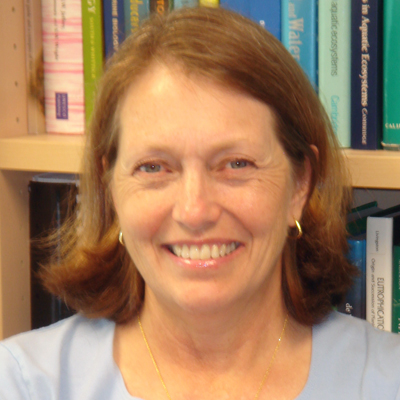Reducing the global incidence of algae blooms
The old adage, “everything in moderation” is exceptionally relevant when considering the nutrients that accumulate within our oceans and freshwaters. Too little, and aquatic life is unable to thrive, while too much results in algae blooms that can lead to toxic compounds that can kill fish, ultimately harming people from consumption of toxic seafoods. These blooms can also affect drinking water supplies. Dr. Patricia Glibert, of the University of Maryland Center for Environmental Science, has dedicated decades to tackling the ecological problems that occur due to the proliferations of species that result in harmful red tide health risks. In addition to the human and ecological problems that these algae blooms cause, they can also result in large economic costs. When these types of blooms occur, they can force closure of shellfish areas, recreational swimming areas, and they can kill aquaculture products, resulting in losses of thousands to millions of dollars. With our rapidly changing nutrient pollution and climate change, Dr. Glibert hopes to better understand these phenomena to aid management and stewardship of our water resources.
At the forefront of understanding the relationships between regional and global changes in nitrogen pollution and algal blooms, Dr. Glibert’s lab uniquely links the cellular physiological processes with global change phenomena. She and her team are continuing to learn about new harmful species and how they function in the environment. In fact, Dr. Glibert, together with her colleagues, is working towards improving our ability to predict when and where algal blooms will occur and thus, with an improved understanding, her research may be able to reduce their frequency. Ranging from asking the global questions of how nutrient loads change with changing land use and fertilizer use practices, to investigating such questions of how different species of phytoplankton respond to different forms and loads of nitrogen, her work brings the underlying understanding of these unique microbes to help solve a significant and increasing international problem!
Current projects are focused on a range of scales:
-
Global Nutrient Pollution: Dr. Glibert is studying global estimates of nutrient pollution and its effect on algae in coastal seas. This project involves gathering data at the global scale and collaborating with ecological modelers to make forecasts. This project also relates how changes in nutrient pollution interact with changes in climate.
-
San Francisco Bay Delta: Dr. Glibert is studying how nutrient pollution in the San Francisco Bay Delta is contributing to the decline of water quality and how it may be affecting fish populations. Such issues are extremely important to the region because of California’s dependence upon the Bay Delta.
-
Recovery: Dr. Glibert and her team are studying if systems such as Chesapeake Bay and Florida Bay are showing signs of recovery with large investments in nutrient reductions. Taking into account the new laws and reductions in nutrients, her research aims to understand how ecosystems are responding.
-
China: Dr. Glibert studies China’s estuaries and coasts as they are some of the most polluted in the world. Using knowledge of “runaway pollution” has helped inform improved management and stewardship of our coasts and estuaries. In addition, Dr. Glibert’s research provides beneficial information that helps guide future management laws and regulations.
-
Understanding the Subcellular: Dr. Glibert and her team are studying the responses of specific types of algae to changes in nutrient loads at the subcellular level. Conducting controlled laboratory experiments allows Dr. Glibert to isolate how different factors affect the growth of different types of algae.
Bio
Dr. Patricia Glibert has always been fascinated by the water. As a child, she spent her summers at the shore with her family and naturally moved towards a field in oceanography with the encouragement of inspiring high school teachers and college professors. As an undergraduate in the 1970’s, she was inspired, like many others, by Rachel Carson’s Silent Spring and the environmental movement that arose around its publishing. Therefore, she has passionately worked towards making a meaningful impact on the environment for the last forty years.
Dr. Glibert’s interests are consistent with her love of water. She especially enjoys sailing with her husband and three children.
Website: http://www.hpl.umces.edu/glibert/


